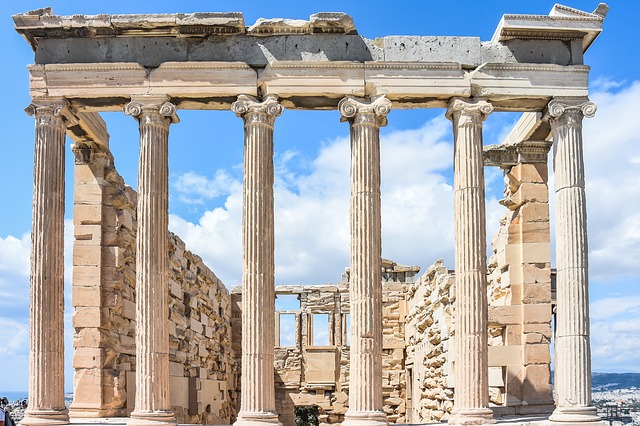Classical architecture
[edit] Introduction
Classical architecture refers to a style of buildings originally constructed by the Ancient Greeks and Romans, especially between the fifth century BCE in Greece and the third century CE in Rome. The style of classical architecture has been reproduced throughout architectural history whenever architects looked to the ancient past for illumination and inspiration, and in search of what they may have regarded as lost ideals.
The Renaissance is an obvious example, but so are the Greek revivals of the 19th century in Victorian Britain and other parts of Europe. Victorian architects sometimes created exact copies of classical forms but otherwise they adopted an eclectic approach that involved recombining classical forms and motifs to create a new style or typology. For example, a Greek temple could become the model for a church, a town hall or even a railway station.
In the US, the Classical Revival or Neoclassical Style (1895-1950) is one of the most common architectural styles. It was most often used for courthouses, banks, churches, schools and mansions. Later, Hitler’s architect Albert Speer designed his vision of the new post-War Berlin entirely in a pared-down, mostly unadorned neoclassical style.
[edit] Characteristics of classical architecture
Classical buildings in ancient Greek and Roman times were typically built from marble or some other attractive, durable stone, but since then, they have also been built in brick, concrete and stone. The architecture was primarily trabeated (post and beam) and evolved from timber origins.
Greek architecture followed a highly-structured system of proportions that related individual architectural components to the whole building. This system was developed according to three basic styles, or 'orders' – Doric, Ionic and Corinthian – that formed the heart of classical Greek architecture. The Romans also used these widely but added two of their own orders: Tuscan and Composite.
For further information see Classical Orders in Architecture.
[edit] Related articles on Designing Buildings
- Architectural history.
- Architectural Styles.
- Baroque architecture.
- Classical orders in architecture.
- Classical Revival style.
- Elements of classical columns.
- Italian rationalism.
- Italian Renaissance Revival style.
- Jacobean architecture.
- Neoclassical architecture.
- Nineteenth century building types.
- Palladian architecture.
- Origins of Classical Architecture.
- Rinceau.
- Roman Classical orders in architecture.
- Sir Christopher Wren.
- Xystus.
Featured articles and news
RTPI leader to become new CIOB Chief Executive Officer
Dr Victoria Hills MRTPI, FICE to take over after Caroline Gumble’s departure.
Social and affordable housing, a long term plan for delivery
The “Delivering a Decade of Renewal for Social and Affordable Housing” strategy sets out future path.
A change to adoptive architecture
Effects of global weather warming on architectural detailing, material choice and human interaction.
The proposed publicly owned and backed subsidiary of Homes England, to facilitate new homes.
How big is the problem and what can we do to mitigate the effects?
Overheating guidance and tools for building designers
A number of cool guides to help with the heat.
The UK's Modern Industrial Strategy: A 10 year plan
Previous consultation criticism, current key elements and general support with some persisting reservations.
Building Safety Regulator reforms
New roles, new staff and a new fast track service pave the way for a single construction regulator.
Architectural Technologist CPDs and Communications
CIAT CPD… and how you can do it!
Cooling centres and cool spaces
Managing extreme heat in cities by directing the public to places for heat stress relief and water sources.
Winter gardens: A brief history and warm variations
Extending the season with glass in different forms and terms.
Restoring Great Yarmouth's Winter Gardens
Transforming one of the least sustainable constructions imaginable.
Construction Skills Mission Board launch sector drive
Newly formed government and industry collaboration set strategy for recruiting an additional 100,000 construction workers a year.
New Architects Code comes into effect in September 2025
ARB Architects Code of Conduct and Practice available with ongoing consultation regarding guidance.
Welsh Skills Body (Medr) launches ambitious plan
The new skills body brings together funding and regulation of tertiary education and research for the devolved nation.
Paul Gandy FCIOB announced as next CIOB President
Former Tilbury Douglas CEO takes helm.
UK Infrastructure: A 10 Year Strategy. In brief with reactions
With the National Infrastructure and Service Transformation Authority (NISTA).

























Comments
Classical architecture is always stunning and beautiful. It has its own uniqueness. This article explains classical architecture in a simple way. Glad to have found it.